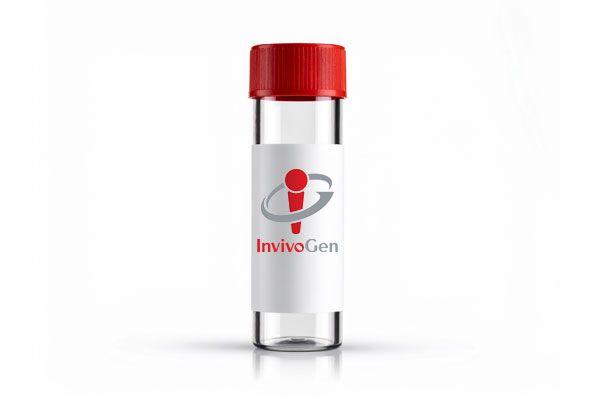It’s the forbidden word in cell culture. It’s every cell culturist’s worst nightmare, or at least it should be. Mycoplasma…
Mycoplasma contamination of cell cultures has been known for decades[1] and disturbingly, has become widespread, threatening academic labs to biopharmaceutical production facilities[2]. In fact, depending on the laboratory, anywhere from 10% to 85% of cell lines may be contaminated[3]. Mycoplasmas can drastically alter your cells and consequently, skew your research results. So what can you do to protect your cells from mycoplasma contamination? Find out more below.
Mycoplasma contamination in cell cultures
Mycoplasmas are the smallest free-living organisms and considered to be the simplest of bacteria. They belong to the bacterial class Mollicutes, whose members are distinguished by their lack of a cell wall and their plasma-like form. The first strains of mycoplasma were isolated at the Pasteur Institute in 1898, and to date, 20 of the roughly 190 known species have been identified as bona fide contaminants of laboratory cell cultures. Owing to their extremely basic genomes, mycoplasmas must function as parasites in order to meet their energy and biosynthesis demands. Thus, they exploit their host’s cells to survive.
Given their tiny size (~100 nm), mycoplasmas are undetectable by the naked eye or even by optical microscopy; thus, they typically go undetected for extended periods of time. Moreover, given their lack of a cell wall, they are resistant to many common antibiotics such as penicillin and streptomycin. Hundreds of mycoplasmas can attach to a single eukaryotic cell, eventually invading the host by fusing with the cell membrane. Upon entry into the cell, mycoplasmas multiply, eventually outnumbering host cells by 1000-fold, and they circumvent host defenses to survive. Contamination of a cell culture by mycoplasmas cannot be visualized, as it does not generate the turbidity typically associated with bacterial or fungal contamination. Furthermore, the consequent morphological changes and altered growth rates in affected cell cultures can be minimal or simply unapparent.
Consequences of Mycoplasma contamination in cell cultures
Mycoplasmas compete with host cells for biosynthetic precursors and nutrients and can alter DNA, RNA and protein synthesis, diminish amino acid and ATP levels, introduce chromosomal alterations, and modify host-cell plasma membrane antigens. A microarray analysis on contaminated cultured human cells has revealed the severe effects that mycoplasmas can have on the expression of hundreds of genes, including some that encode receptors, ion channels, growth factors and oncogenes[4]. Moreover, mycoplasmas exert significant effects on cultured immune cells such as monocytes and macrophages.
Mycoplasmas contain highly immunogenic lipoproteins anchored on the outer face of the plasma membrane. These lipoproteins are recognized by specific pattern recognition receptors on immune cells—in particular, Toll-like receptor 2 (TLR2). Upon recognition of mycoplasmal lipoproteins, TLR2 induces the NF-kB pathway, which leads to activation of these cells and consequently, to biased experimental results.
Detecting, eliminating and preventing mycoplasma contamination
There are three major sources leading to mycoplasma contamination of cell cultures in the laboratory: infected cells sent from another lab; contaminated cell culture medium reagents such as serum and trypsin; and laboratory personnel infected with M. orale or M. fermentans. Furthermore, contamination can spread rapidly to other cell lines through dispersion of aerosol droplets. Once mycoplasmas have been detected, the best solution to eliminate them and to prevent them from spreading is to discard the contaminated cell line. However, valuable cell lines that are too precious to be sacrificed can be salvaged by treatment with effective mycoplasma-eradication products, including mycoplasma-selective antibiotics. These products have been shown to eliminate mycoplasma and to restore cell behavior and responses within days or weeks after treatment[5].
So what can you do to detect, eliminate or prevent mycoplasma contamination in your cell cultures? The answer is clear and simple: You must make every effort possible to prevent or eliminate mycoplasmas. This includes regularly testing your cell cultures to ensure absence of mycoplasma, always employing proper aseptic technique in your laboratory, and occasionally using antibiotic treatments to save valuable cell lines that you cannot afford to lose.
For your convenience, InvivoGen offers an easy and reliable mycoplasma detection method, PlasmoTest™. This cell-based assay exploits the ability of the immune system (in particular TLR2) to recognize mycoplasmas and can be easily implemented in your cell culture procedures to enable routine checks for all types of mycoplasma contamination. InvivoGen also offers a new method for the detection of mycoplasma in cell culture, MycoStrip®, for immediate detection of mycoplasma contamination. MycoStrip® is a simple and rapid test based on isothermal PCR. The results are clearly visualized as a band on an immunochromatic strip.
InvivoGen also provides products to treat contaminated cell cultures, including Plasmocin®, a well-established anti-Mycoplasma reagent; and Normocin®, which is used as a "routine addition" to cell culture media to prevent mycoplasma, bacterial and fungal contaminations.
More information about InvivoGen’s anti-microbial solutions.
References:
1. Robinson LB. et al., 1956. Contamination of human cell cultures by pleuropneumonia like organisms. Science. 124(3232):1147-8
2. Armstrong SE. et al., 2010. The scope of mycoplasma contamination within the biopharmaceutical industry. Biologicals. 38(2):211-3
3. Olarerin-George AO. and Hogenesch JB., 2015, Assessing the prevalence of mycoplasma contamination in cell culture via a survey of NCBI’s RNA-seq archive, Nucleic Acids Research, (5):2535-42
4. Miller CJ. et al., 2003. Mycoplasma infection significantly alters microarray gene expression profiles. Biotechniques. 35(4):812-4
5. Zakharova E. et al., 2010. Mycoplasma suppression of THP-1 Cell TLR responses is corrected with antibiotics. PLoS One. 5(3):e9900




